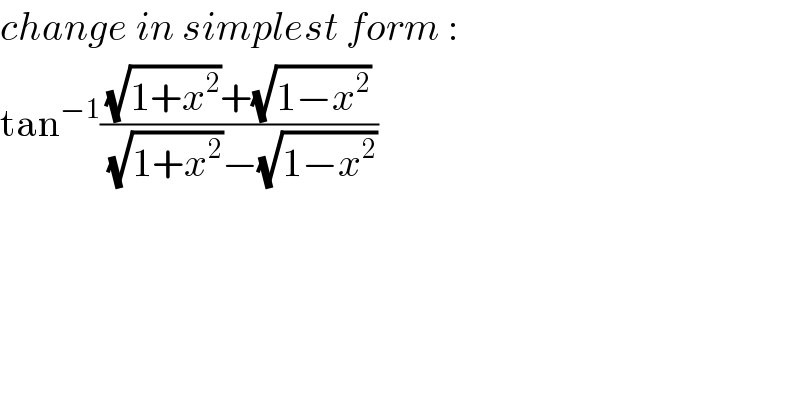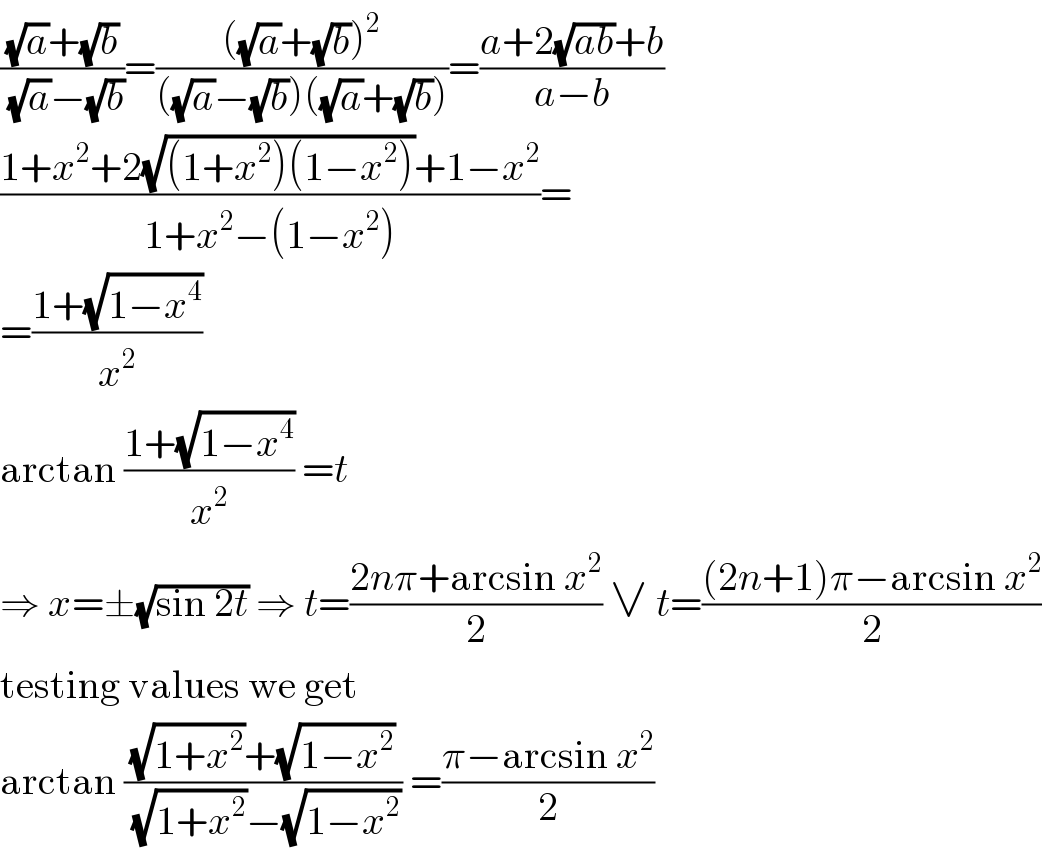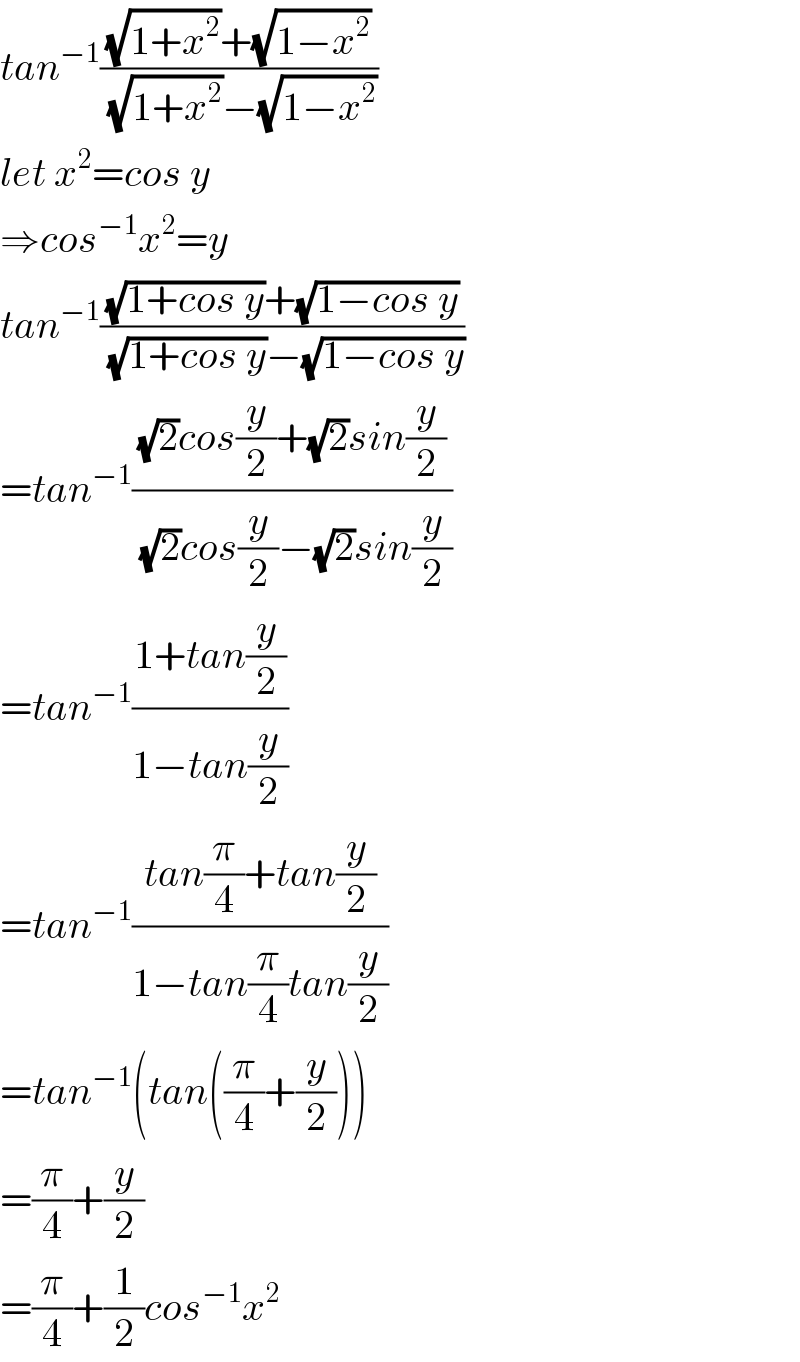Question Number 58500 by Kunal12588 last updated on 24/Apr/19

Answered by MJS last updated on 24/Apr/19

Commented by Kunal12588 last updated on 24/Apr/19

Answered by Kunal12588 last updated on 24/Apr/19

Commented by MJS last updated on 24/Apr/19

